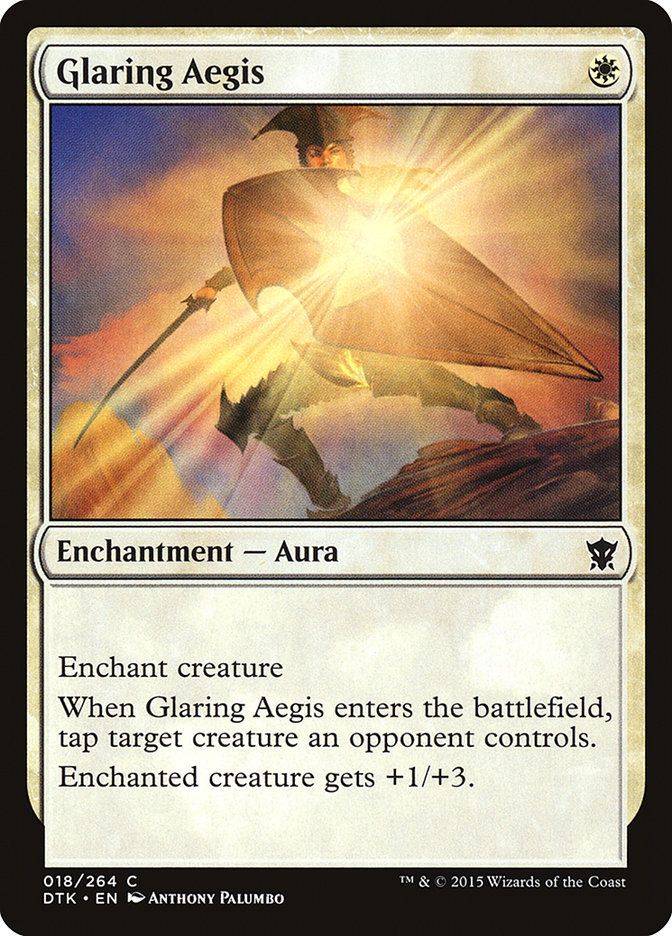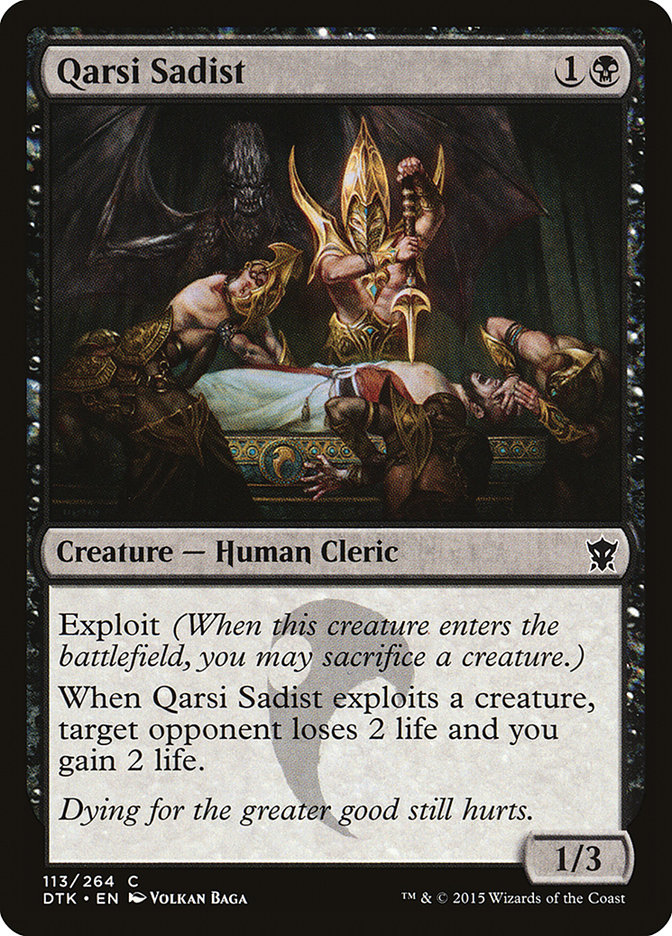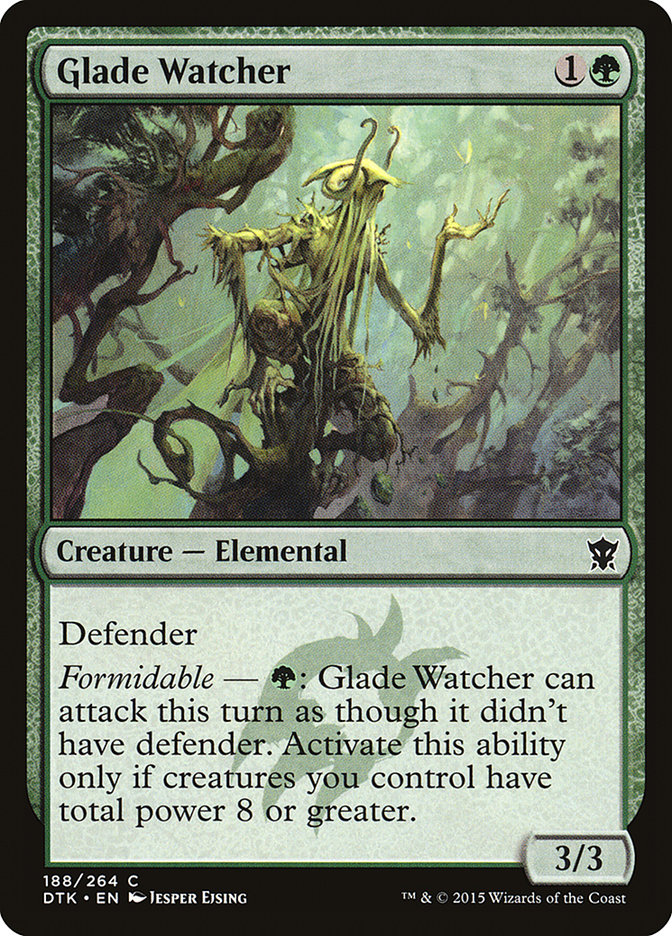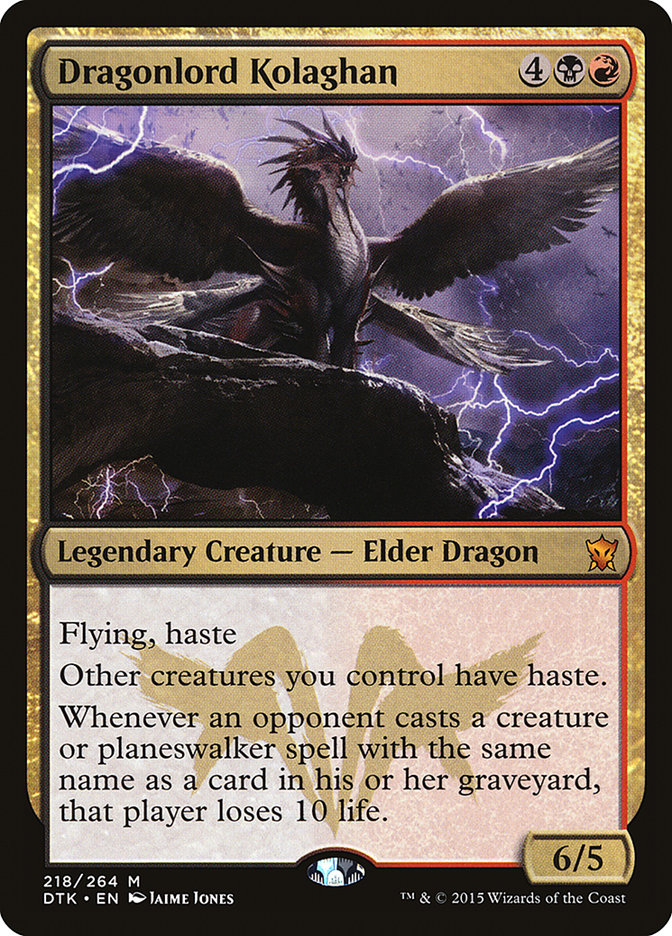Hooray, we have a new set! This dragon-infused large set brings a bit of everything, with no small portion of new, huge beasts roaring overhead. If dragons
are the main theme of the set, every card that goes with that theme has the potential to seem powerful, splashy, and over-the-top. Dragons lend themselves
to being ostentatious, what with the fact they are larger than most houses and can char an army in a single breath. Thus, Dragons have taken a lot of the
focus, but the set has 264 cards to enjoy. It’s easy to get sidetracked by the awesome Commands or the terrific legendary creatures. But instead of the
dragons, I want to spend our first week with the fully spoiled set with the peasants.
In my personal, local experience, commons often sidle into a format, play a filler role in Draft decks, then rot in boxes and binders of card shops and
personal collections by the dozens. If even uncommons are often discarded, there’s no chance for some of the set’s most frequently printed cards.
So, before you get a chance to rip open and toss aside your commons this weekend, I want to give them their one shot to catch and hold your attention.
Besides, with oddball commons as the focus, these will offer starting points for budget-friendly options for your friends and FNMs!
Once I started bingeing the spoiler this past Friday, I found this little treat, the first unseen common that caught my eye. Glaring Aegis has a lot of
things going for it: It costs one mana, gives lots of toughness that makes it easier to survive removal and an attack, and it taps down a blocker, all in
the world of heroic and prowess creatures. Glaring Aegis has an older cousin, Hammerhand, and together, they provide redundant effects that take R/W Heroic
decks in a new direction.
Creatures (19)
Lands (20)
Spells (21)

Using the well-known stable of heroic creatures, Glaring Aegis provides depth and reach when you’ve cast and exhausted your Hammerhand. It’s a simple
design, but I think we could be working up to something fun here. With most of the deck’s spells at one mana, you’ll never be mana screwed if you’ve got a
land or two, and the fact that R/W gives us the hyper-efficient Chained to the Rocks removes even more blockers from the equation. R/W Heroic is not new,
and in fact, the Aegis is the only new spell in this list. However, the spell might be enough to give your creatures durability and your boardstate some
much needed power without sacrificing the theme.
In blue, I was shocked by this little common.
So most of the time, a Lumengrid Warden with a conditional trigger isn’t getting a lot of people excited. This card has a recent comparison, Incursion
Specialist, and I think this one has him beaten by a mile. One trigger makes this a two-mana Phantom Warrior, and every extra trigger makes it hit harder.
While every color offers a lot of fun ways to trigger the Spellfist, why don’t we keep things simple and focus on blue?
Creatures (20)
Lands (24)
Spells (16)

That’s right! Monk tribal! With the combination of cheap creatures, lots of opportunities to counter, and even the occasional double strike for the
Spellfist via Shu Yun, you’ll be hitting hard and fast with your flying fists. The Spellfist, while no Kiln Fiend or Wee Dragonauts, still has a high
potential given its mono-blue nature and the variety of free or cheap cantrips in Modern. Neither this deck nor a Modern iteration might ever be serious,
but lots of people love this style of combo-ish aggro deck, and I’m one of them.
Make no mistake, this is a cheap Gray Merchant of Asphodel. For less than half the mana, you can get a four-point life swing from a two-drop. Because it’s
a creature, it can be more easily recovered in black than, say, a burn spell or enchantment. So how can we make something like this fun and potentially
powerful? By adding recursion with white!
Creatures (28)
- 4 Athreos, God of Passage
- 4 Bloodsoaked Champion
- 4 Timely Hordemate
- 4 Qarsi High Priest
- 4 Minister of Pain
- 4 Qarsi Sadist
- 4 Shambling Goblin
Lands (23)
Spells (9)

Part theme and part functional deck, this fun little number pushes twelve one-drops and some midgame staying power. The Sadist will often have other
targets besides itself to sacrifice, and nearly all of them can be brought back after a simple attack, followed up with Timely Hordemate. Athreos, God of
Passage means that paying three life to keep a two-mana drain down is actually a relevant dilemma, and the deck’s simple, tight removal suite got a big
boost from Dragons of Tarkir’s Ultimate Price reprint and the current format’s most unconditional removal, Utter End. Rally the Ancestors is the real
treat, returning Qarsi Sadist en masse for just four mana. The exile clause is pretty irrelevant; just sacrifice the Sadist to its own exploit trigger.
Unlike similar clauses present on Whip of Erebos or unearth creatures, the exile is a delayed trigger that has no replacement attached to it, meaning that
returning Sadists will go to the bin without a problem after their exploit trigger resolves. Furthermore, Qarsi High Priest can sacrifice in response to
the upkeep trigger and preserve any other creatures you’d like to recover with the Hordemate.
The next one has, admittedly, gotten a bit of press.
This little booger is a smaller Purphoros, God of the Forge. Unlike the Purph though, you can have multiple of these in play at once, and it will often go
hand-in-hand with Outpost Siege, another similarly-worded enchantment. Put the fact that entering and leaving the battlefield is relevant, and you’ve got
the makings of an awesome Dash deck!
Creatures (25)
- 1 Kolaghan, the Storm's Fury
- 4 Goblin Heelcutter
- 4 Mardu Shadowspear
- 4 Mardu Strike Leader
- 4 Warbringer
- 4 Pitiless Horde
- 4 Ambuscade Shaman
Lands (24)
Spells (11)

Playing dash as a mechanic by itself makes combat pretty tricky for your opponent. You’ll always have a large set of options, as your hand will often be
full with beefy creatures and nifty tricks. Warbringer and and Ambuscade Shaman are the two “dash lords,” each giving dash-specific benefits that really
amp this deck up. The block’s most interesting dash cards are here, including Goblin Heelcutter, a card that’s even broke into some interesting red decks
currently floating around. With Warbringer out, you can cast four Heelcutters for RRRR, blanking your opponent’s blockers and smashing for upwards of
twelve damage. Pitiless Horde is huge, allowing you to smash through huge lines of defenders without batting an eye. It’s awesome either as a dash or
hard-cast creature, and the two life a turn won’t matter too much; trade it with a Siege Rhino if you get into trouble. The spells are particularly
interesting. Anger of the Gods and Crux of Fate rarely belong in an aggro deck, but because your creatures won’t be on the battlefield long, you can Anger
of the Gods to clean up small creatures, tokens, and/or mana creatures to make your path clear, with minimal sacrifice of your own. Crux of Fate,
similarly, is lategame enough that your opponent might be out of creatures that can effectively block vicious attackers like the Pitiless Horde. With the
mana you have, you can create an army out of nowhere and take them out. A dash-intensive deck’s immunity to enemy board wipes and enchantment-based removal
is strong against the decks that favor them.
In green, I picked a funny one.
Formidable is interesting, and I like it for a lot of reasons. First, most cards with formidable already help themselves reach the eight-power threshold.
In Glade Watcher’s case, it is one of the more efficient examples of this; it’s an easy-to-cast 3/3 that only needs five more power to activate.
Thankfully, this set brought us lots of power in cheap, heavy-green creatures to facilitate this little guy getting online. Here’s a look so far.
Creatures (32)
- 4 Elvish Mystic
- 4 Reverent Hunter
- 1 Nylea, God of the Hunt
- 4 Boon Satyr
- 4 Destructor Dragon
- 3 Shaman of Forgotten Ways
- 4 Scaleguard Sentinels
- 4 Avatar of the Resolute
- 4 Glade Watcher
Planeswalkers (3)
Lands (23)
Spells (2)

Yes, that’s 33 green creatures with one purpose: stompy. Stomping face is overlooked these days; most green decks feature some amount of Sylvan Caryatid,
Courser of Kruphix, and mind-numbing boredom. When I play green, I like to be smashing, simple as that. Many of these creatures give at least two devotion,
and the small +1/+1 counter synergy helps Avatar of the Resolute a ton. Have you looked at this guy?
This creature is a beating; having innate trample and the odd, but invaluable reach make for a great offensive and defensive creature for mono-green.
Lategame, Glade Watcher’s activation cost is irrelevant, making it a live 3/3 for two. Shaman of Forgotten Ways allows an opportunity to close the game
late, but it also provides fuel to get out one of green’s hidden gems: Destructor Dragon. While providing a Dragon for Scaleguard Sentinels, it also comes
down as an evasive 4/4 that, when it dies can take a Mountain with something Chained to the Rocks, an opposing Nykthos, a planeswalker, or an anthem
enchantment. The possibilities are near endless, and being able to Boon Satyr an evasive creature, either with trample or flying, will close a lot of
games. Nissa, Worldwaker is perfect for any mono-Forest build, and Shamanic Revelation is nearly guaranteed you to draw a fresh stack of cards, potentially
off Nissa’s elementals alone. Green’s Sphinx’s Revelation has gotten next to no play, but with the possibility of mono-green aggro returning alongside a
thirty-plus creature list, there might be a chance to “Revelate” in a Forest-stuffed deck.
I hope you’re getting pumped about the Prerelease this weekend too! Now we have a simpler choice of two-color clans (or broods, depending on where you
look) based on their Dragonlord. There’s cards in every color that interest me, and several cycles have provided similar offerings to every clan. So far
though, my Khans of Tarkir Draft and Sealed experience has favored Mardu, so I think I’ll be in Kolaghan’s clan for Saturday.
It just feels right; the combination of dash, removal, and big hasty flyers is my favorite way to open up stale Sealed games. Even before that, Rakdos has
always been a preferred style of mine, so I’ll stick to what I know. This format could throw most anything at you, and thus it feels more difficult to
prepare for. Most every deck will have big tough flyers, so learning how to deal with them will be essential to succeeding.
One parting question: Is there a common in the set that sticks out to you? Is there any play among the most “mundane” of Magic’s new set?
May you open many Dragonlords!








